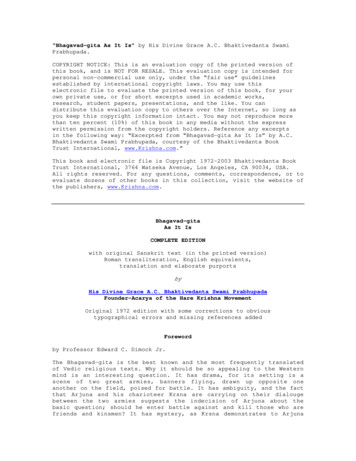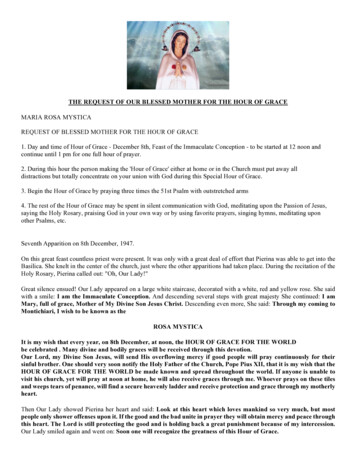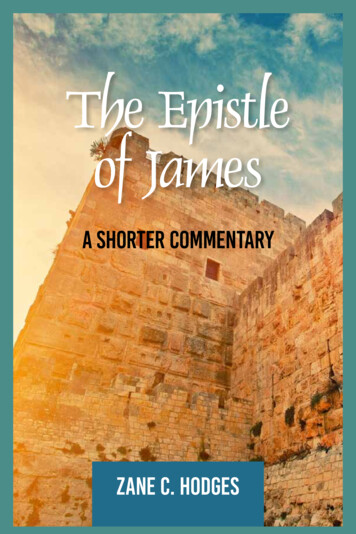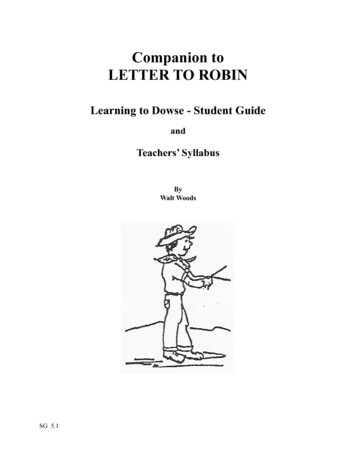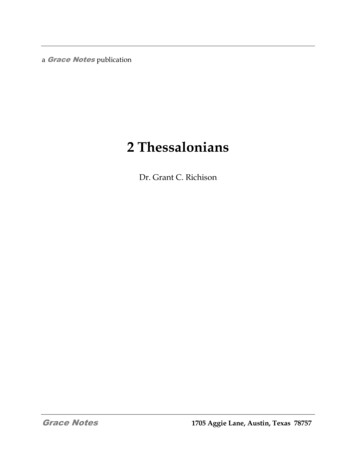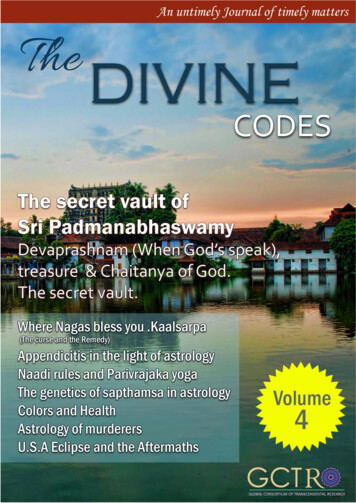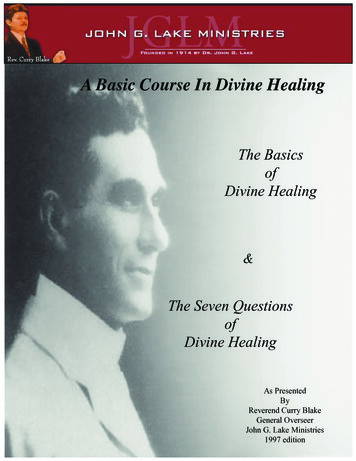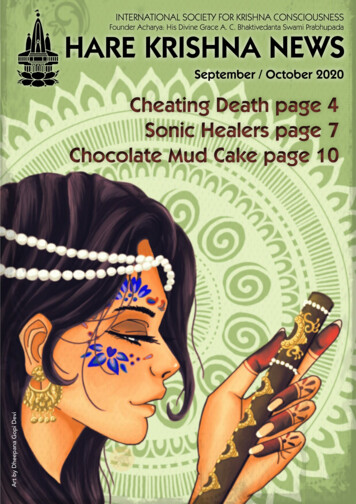
Transcription
INTERNATIONAL SOCIETY FOR KRISHNA CONSCIOUSNESSFounder Acharya: His Divine Grace A. C. Bhaktivedanta Swami PrabhupadaHARE KRISHNA NEWSSeptember / October 2020Art by Dheepana Gopi DeviCheating Death page 4Sonic Healers page 7Chocolate Mud Cake page 10
SSRRT CONNECTDarshan TimesBridge DarshanMonday–Saturday11am-1pmTemple DarshanSundays ONLY 10am-1pm.Note: Since this is a walk-through darshanonly, you are welcome to rejoin the darshanqueue as many times as you like.If you've missed any of theclasses hosted by Sri Sri RadhaRadhanath Temple, you can listenor download the audio here:https://soundcloud.com/durbankrishnaNote: All classes are live streamed onFacebook @DurbanKrishna.Monday-Friday 11am-3pmCLOSED ON WEDNESDAYSSaturday & Sunday 10am-1pmWhatsApp 078 849 4291Radhanath's GiftsPop-up StorePop-up store is situated inSri Sri Radha RadhanathTemple's main parking(opposite Govinda's Pop-upTakeaway). Sundays ONLY 10am-1pmStrict COVID-19 safety protocols MUST befollowed when visiting the temple.4Soul PoetryThe Story of Krishna’s Flute6Sonic Healers 7Meditations on Patience 8Vaishnava Calendar 9The Vaishnava ChefChocolate Mud Cake 10For the KidsForever Flower 10Hare Krishna News layout & design by Rasa-sthali Dasi.Are You An Artist?Hare Krishna News hasfeatured original art bySouth African devoteessince September 2018.Would you like your art tobe featured in Hare KrishnaNews? Contact Rasa-sthaliDasi (editor) via rasasthali@iskcondurban.net.In this IssueQuotes from Srimad Bhagavatam and Bhagavad-gita are The Bhaktivedanta Book Trust International, Inc. www.Krishna.com.Used with permission.You can shop from thecomfort of your home forekadasi products, frozensoya, paneer, Cowpathypersonal & home care range, books, andmaha prasada. Free delivery to all ordersover R350 and within a 25km range of theTemple.http://iskcondurban.net/shop/Catch Up on SoundCloud!Govinda's Pop-up TakeawaySpecial FeatureCheating Death Part 1Shop OnlineHow to Contact UsCall 031 403 3328 or WhatsApp 062 526 3606Email: temple@iskcondurban.netHow to subscribe to the Week Ahead email:1. Send an email to temple@iskcondurban.net. Type“subscribe” and yourname in the subject line.How to subscribe to SSRRT News WhatsApp1. Save this number in your contacts:SSRRT News 27 81 759 01912. Send a “subscribe” and yourname to the abovenumber3. You will receive a confirmation notification.4. Kindly note: this is a no-reply broadcast service.5. You MUST save the number to your contacts and MUSTsubscribe personally in order to receive the broadcasts.Child Protection Office: durbancpt@gmail.com 076 719 6461www.childprotectionoffice.org
RememberingOn The CoverArt by Dheepana Gopi DeviDheepana is studying Visual Multimedia Art and isalso a part-time freelance artist. She has been partof ISKCON since birth and is especially attracted toLord Jagannath. Around six years old, wanting tokeep the Lord as her own, she made a Jagannathdeity out of clay. Dheepana has no official training, isself-taught, and spent multiple hours practicing. Shehas explored sketching, painting, carving, casting,as well as multimedia styles of art, and recently shebegan digital art.Dheepana shares the inspiration behind her art:Each year I eagerly wait to see Lord Jagannath atthe Ratha Yatra festival. Seeing Him at the festivalbrings joy to my heart. Earlier this year when I foundout that the festival would be postponed, my heartsank and so, I’ve drawn this devotee to representthe happiness that one would’ve experiencedduring the festival and I dressed and decoratedher accordingly. This is not intended to be a selfportrait. The devotee is looking at a bamboo flute,which stimulates her remembrance of Krishna. Theart is completely digital and I have also added afew multimedia effects. I’ve used a technique called“burning” on the base colour and then shaded overto create more detail. I admit, it could’ve been morerefined, but it is my first attempt at burning. Thereare hidden aspects in this artwork, for example, thebackground is to stimulate the heart chakra, whichis associated with the colour green, which brings ahealing vibe to the reader. Green is also a creativestimulating colour. The main concept of my artworkis remembrance. During the lock down, devoteeshave felt the loss of not being able to see Krishnafor so long. And not being able to indulge in thespiritual vibe that is so potent the temple. Now thatwe are on Level One, I must say that I am excited tobe able to go back to the temple and see Krishnaagain!Who is Prabhu?Living with Srila PrabhupadaWhat did Srila Prabhupada think about the use ofthe term “Prabhu” amongst his disciples? GovindaDasi relates the following story:In May of 1968, I was sitting in Prabhupada’s roomtaking dictation when my husband came in andasked, “Swamiji, can I call Govinda Dasi ‘Govindaji’?”Prabhupada replied, “No, ‘ji’ is a very third class formof address.” So I asked, “Then why are we callingyou ‘Swami-ji’?” He was very humble, saying it wasnot so important. But I insisted that it was indeedimportant to us, and that we wanted to address himin the most respectful manner. He then said, “SrilaPrabhupada is nice.”He explained, “Srila Prabhupada means the greatmaster at whose lotus feet all masters take shelter.Prabhu means ‘master.’ You are all masters who havetaken shelter of me, the Prabhupada. So you shouldall call one another as Prabhu, all of you who havetaken shelter of me, the Prabhupada.”He told all of us, boys and girls alike, to alwaysaddress one another in this way. Prabhupada, whoknew Sanskrit, didn’t relate it to gender. Rather, itwas related to our personal relationship to him as“the Prabhupada.” He called me “Govinda DasiPrabhu,” and my husband “Goursundar Prabhu,”and others, such as “Malati Prabhu,” even in letters.This had the effect of instilling in us respect for oneanother, regardless of gender.”Excerpt from Emergence of Women’s Voices inISKCON, page 411.View/Download here: ns-voices/The audio book version is now available: of-women-s-voices-in-iskcon
Cheating DeathPart OneBy Pranada DasiThe great motivator and aggravator, Change evermorphs our internal and external world, exactingresponses from us. Beginnings bring endings. Endingsbring beginnings. Again and again, Time’s forwardmovement propels us into inescapable realities.Whenever I think of samsara, the cycle of birth anddeath, a vision of a tumbling dryer comes to mind and Ihear the thump-thump of an item hitting the dryer wall,driven by persistent revolutions. The thump-thumpconjures a view of myself trapped in karma’s cyclefrom beginning-less time. Unwittingly, the associationof the dryer and samsara has become so consistentand vivid that when I hear the dryer run or think ofsamsara, my stomach turns with an ache. It’s a negativeimpetus that encourages me to remain committed tomy daily spiritual practices (sadhana). I want releasefrom material life, which includes dying, and the onlyway out is through a spiritual door. To move towardthat door, we can harness the nature of Change.The ancient Bhagavata Purana [SrimadBhagavatam], the author’s own commentary on hisVedanta Sutras, relates the story of Dhruva, a younglad of five who set off for the forest to meditate onVishnu. The child was so uncompromising in hispursuit that six months after he began his sadhana,Sri Vishnu descended and blessed him. Years later, itwas time for Dhruva to die. The fourth canto of thesame book describes, “When Dhruva Maharaja wasattempting to board the transcendental plane, he sawdeath personified approach him. Not caring for death,however, he took advantage of the opportunity to puthis feet on the head of death, and thus he got up onthe airplane, which was as big as a house.”Not everyone perceivesdeath the same. A cat carries itskittens in its mouth, and it alsocatches a rat in its mouth. Whenthe cat catches the rat, it meansdeath for the rat, whereas whenthe cat picks up the kitten by its neck, the kitten ispeaceful and happy.What to speak of death, even life is appreciateddifferently by people with varying values. Seers havestated that those who don’t pursue a spiritual goalare dead while living. They haven’t begun living!Living and dying aren’t always what we think theyare. To illustrate this lesson, a sage came into a king’sassembly. Everyone there sought the sage’s blessings.To the king’s son, the sage said, “You live forever.”To a yogi’s son, he said, “Don’t live; you shoulddie.”He told a hunter’s son, “Don’t die; don’t live.”And then turned an addressed a bhakti-yogi,“Either die or live; it is the same.”The king inquired from his ministers about themeaning of the blessings. They replied, “Your son isenjoying his senses and unrestrictedly taking from theenvironment. He will go to hell after death. Thereforehe should live forever. The yogi’s son is undergoingmany austerities. Since that is a difficult life, heshould die now and reap the rewards. The hunter isliving a miserable life now, and because he is causingsuffering to others, he will suffer in the next life too.So he shouldn’t die or live. The bhakti-yogi is living apeaceful and wholesome life and has a bright future,so his living and dying are the same.”How we die is up to us. Our death aligns withhow we live our life. In Bhagavad-gita, Krishna saysthat what we remember at the moment of death wewill surely attain. Our thoughts are guided not by ourminds but by our hearts. What we love, we remember.If we want a spiritual destination, we’ll have tounconditionally love the inhabitants and the SupremePerson who reside there.There are several fascinating points in thedescription of Dhruva’s ascendancy beyond the fettersof matter.By definition, death is the end of a life; ittakes life away. But Dhruva is very much alive as he“dies.” He retains an individual identity, which includescognition, will, desire, and emotions. In the verses justprior to the one quoted above, Dhruva is described asbathing, dressing, and offering respect to sages andseers. Further, as he prepares to set off on the self’sultimate journey, he thinks of his mother, who was hisfirst guru, and he desires to take her with him. His wishis immediately fulfilled; she appears and boards thevehicle that is to take them into transcendence.What is going on in this scene? What kind oflife after death is he traveling toward with his mother?What was the practice that awarded Dhruva the abilityto cheat death? Dhruva not only deprived death ofits due, but he also took advantage of its presence topropel him forward. Who wouldn’t like to nonchalantlystep over death?Before we discuss Dhruva’ssadhana and his sadhya, or goal,we need to more clearly definedeath: what is dying?At death, the gross bodyexpires; the machine on loan tous has simply worn out. But the subtle features of ourexistence – the atma/self and our psychic body (mind,intelligence, and ego) – continue on. At death, with thesubtle body leading the way, we enter a new physicalbody. When that new machine then fails, we’re forcedout, spinning in Change’s cycle. Over and over again.The samsara engine is fueled by the psychicbody. Material impressions (vrittis or samskaras),desires, and an egoic misidentification with mattercreate a necessity for us to reside in a gross body: avehicle is required to give us an opportunity to fulfillour desires.We can unplug the wheel of samsara whenwe free ourselves from the subtle body. We need toextinguish the mental body; we welcome that death.But I’m not just talking about controlling the mind, livingin the present, or another psychological adjustment.I’m talking about dispensing with all aspects of thesubtle body. When we accomplish this, we no longerhave to endure any deaths.How we die is up to us.Our death aligns withhow we live our life.
Distinguishing the atma from the mental body,and identifying the subtle body as the culprit that keepsus bound, is an important and compelling insight inVedanta. Freeing the self from the subtle mental bodyis what spiritual practice is all about. Each of the yogasattempts this, using different methods.Onceyou’veidentified the problem– if you can see throughthe illusory coveringof the mind-body withthe torch of knowledge– you can do something about it. When you acceptthe task and begin a sadhana, you make an interestingdiscovery. To achieve freedom from death of thephysical body, you must die many deaths of the mentalbody. This is referred to as ego effacement. It is themost important undertaking any of us will ever tackle,the end result so blissful that we can’t truly imagine it.We need to die to the false self in order tocheat death. Swami B. R. Sridhar of the Bhakti traditionliberally used the maxim “die to live” to repeatedlycoax the spiritual aspirant’s focus toward the primaryand challenging work at hand: effacing the false ego.All the layers of predispositions, misconceptions,misidentification, bad qualities, resistance, the social,familial, career selves – all the transitory selves – haveto be dismantled. The ego must be completely effaced.When we think of death we think of darknessand struggle. We think that something is being stolenfrom us. We feel resistance, fear, and denial. The ideaof choosing to die can be shocking, even revolting. Butdeath equals misery only for those who are attachedto the body (or the ego). The death of the ego is onlymisery for one attached to false identities. It’s the egocreating the misery in both deaths. The atma isn’tlosing anything in either case. Spiritual awakening isn’tabout loss but gain. We have to change our angle ofvision.Admittedly, “die to live” isn’t an easy mottoto swallow. When I hear the expression, I sometimesinitially recoil, even though I’m trying to live its ideal!But “die to live” is rich with meaning and promise.The phrase speaks to the great gainawaiting us. We’re not just dying;we are prepari
Vaishnava Calendar 9 The Vaishnava Chef Chocolate Mud Cake 10 For the Kids Forever Flower 10 In this Issue SSRRT CONNECT Darshan Times Bridge Darshan Monday–Saturday 11am-1pm Temple Darshan Sundays ONLY 10am-1pm. Note: Since this is a walk-through darshan only, you are welcome to rejoin the darshan queue as many times as you like.
